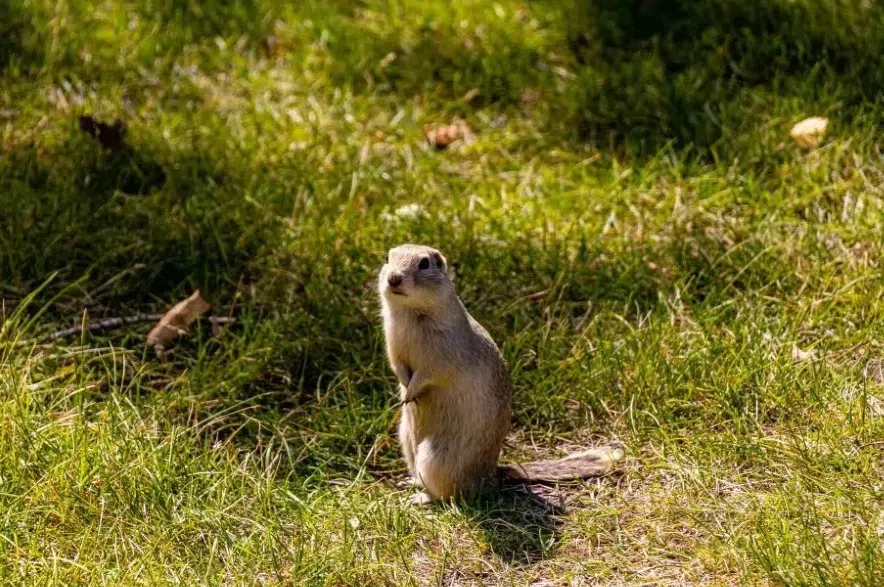Farmers and producers in Saskatchewan are being hit with another obstacle to overcome this summer.
Gophers have started taking over farmland, making it their own personal playground and have begun to damage crops.
Bill Huber, President of Saskatchewan Association of Rural Municipalities (SARM), said it’s not just one area in particular that is being targeted.
“They’re kind of everywhere, but there are certainly areas that are more heavily populated,” he said. “Gophers thrive in drier conditions, and not so much rainfall.”
Read more:
- Drought support for farmers coming from provincial, federal governments
- ‘Worst we’ve seen’: Maple Creek, Enterprise join list of RMs declaring drought emergency
- Topsoil moisture levels rising thanks to recent rainfall: Crop Report
Huber said the south and southwest regions of the province have it the worst, where favourable drought conditions exist.
Huber said rainy conditions can hurt population numbers.
“They’re susceptible to different viruses and pneumonias in the damp, wet ground,” he said. “And they don’t repopulate quite as fast.”
Spring is also when gophers are most problematic, munching on crops that are just beginning to grow.
“It’s amazing what they’ll eat and they enjoy fresh-started crops that are just emerging from the ground. If there is an overpopulation of gophers, they can clean off acres in virtually days,” he said.
While there might be many ways to remove gophers, SARM and the Saskatchewan Wildlife Federation have narrowed down the ways they remove them.
“The best way is a poison to get that proper bait down a gopher hole so there’s no risk to any wildlife or domesticated animals,” he said. “I guess you can shoot them, and that’s what the Saskatchewan Wildlife Federation offered to us to help control them.”
Darrell Crabbe, Executive Director of the Saskatchewan Wildlife Federation, said it’s more than just a hunting opportunity for them.
“For generations, Saskatchewan people have hunted gophers,” he said. “They do it quietly, but we do see this gain as a great opportunity to help out landowners and to build some positive relationships.”
Since the Saskatchewan Wildlife Federation and SARM started offering help to producers on Wednesday, Crabbe said it’s been a steady stream of calls.
“I probably have two staff going at this pretty much constantly,” he said. “We’re very surprised about the sheer volume of landowners looking for some help on this.”
While this year has felt like an uptick in gopher population, Crabbe said it’s not the worst he’s ever seen.
“I can remember back 20 years ago, there were so many gophers that you would go to some fields and it looked like the field was actually moving,” he said.
Crabbe does believe that Saskatchewan is either in a peak population year or on the way to one.
“It’s quite surprising to me, but we’ve had calls everywhere from north of Lloydminster … right down to both the southeast corner and southwest corner of the province,” he said. “It’s been quite eye-opening.”
Crabbe hopes to keep the population under control so farmers and producers don’t see major losses to their crops this year.
Read more:











